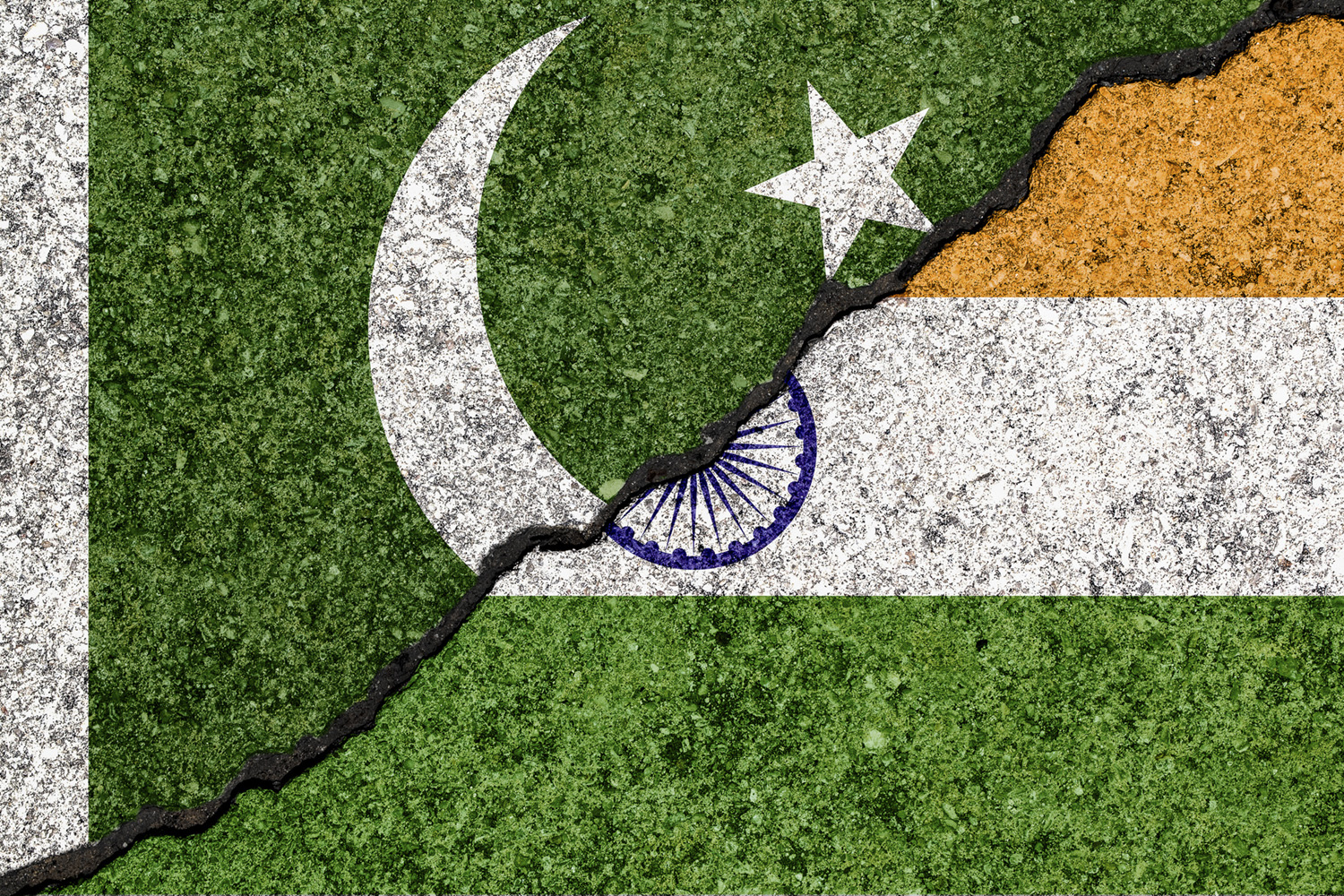
1947
The 1947 Partition: THE GREAT DIVIDE “At least 15 million people were uprooted and displaced in one of the largest human migration in History” Background The 3rd June plan, famously called Mountbatten Plan, intended the division between two dominions i.e India and Pakistan. Gandhi who felt that the partition was against fraternity that he had infused into the people through freedom movements did not agree for the partition and also asked people to not to take it to their hearts.
On July 18, 1947, British Parliament ratified the Mountbatten plan for the Independence of India Act 1947. This Act highlighted the partition; Princely states freed from British Crown and had liberty to join either India or Pakistan; The constituent assemblies of both the states had privilege to make the constitution and thus on 14 and 15 of August 1947 Pakistan and India came into existence. Even after the partition happened there was no end to problems faced by people as there was no specific institutions with which partition problems can be discussed, Jinnaha who was adamant wanted the position of Governor General to himself and there was delay in the announcement of boundary commission all these lead to communal bloodshed which India had to pay through in the form of thousands of lives that got burnt in the fire of ‘PARTITION’.
Causes of the Partition of India Communalism British Policy of Divide and Rule: British rule identified Hindus to be majority and Muslims to be minority and a separate voting system was introduced where Hindus voted for hindu and muslims for muslim. Also, introduction of ENGLISH education undermined Arabic and Persian learning which added further economic backwardness and exclusion of Muslims from service. Socio-Economic reasons: There was rivalry for jobs, trade and industry between two communities.
As India was economically backward due to unemployment, there was ample scope for the colonial government to use concessions, favors and reservations to fuel communal and separatist tendencies. 2. Demand for Pakistan: Lahore session of 1940 demanded separate states for Muslims in the North Western and eastern zones of India and Jinnah’s urge for two nation theory. 3. Pakistan Resolution: The Muslim league wanted some amount of autonomy for the regions with a Muslim majority, a resolution was proposed on March 23, 1940. 4. Failure of Negotiations: The Cripps Mission (1942) and the Cabinet Mission Plan (1946) failed to secure an agreement between Indian National Congress (INC) and All India Muslim League (AIML). 5. Direct Action or Violence of August 1946: The Muslim League withdrew their support to the Cabinet Mission plan and their demand for Pakistan increased.
On 16 August, 1946 Direct Action day was announced which led to violence in Calcutta and death of many people. Effects of the Partition of India Mass Killing and displacements: There was a surge in Communal Violence which resulted in the death of 1-2 million people. Thousands of people were slaughtered and countless women were raped and kidnapped. Around 14 million people were displaced to other sides of the border. The situation was worsened as there were trains carrying only corpses moving to and fro between the newly formed nations of India and Pakistan.
Rise of Stereotypes: we cannot assume things such as Muslims are harsh, bigoted and unclean offsprings of invaders while Hindus are gentle, liberal and pure because both of them are offsprings of the partition Women’s status: Women experienced horrific violence, abductions, rape and forced conversions. The women were separated from their original families and asked to form new families. It is estimated that approximately 75,000 women were abducted and assaulted. Economic Impact: Disruption of trade and commerce, loss of skilled labors and disruptions in Agriculture sector as farmers moved across borders Political Consequence: Establishment of two nations, India and Pakistan which led to geopolitical tensions and wars in future. Both nation undertook different political trajectories, India adopting secularism while Pakistan evolved as Islamic Republic Regions affected by Partition Punjab: It was divided into Dominion of India and Dominion of Pakistan.
A large population of Muslim resided in the east while Hindus and Sikhs resided in the west. There were shared anxieties leading to forced migrations and communal violence. An estimation of 12 million individuals migrated across Punjab during the partition. Bengal: East Bengal was awarded to Pakistan and West Bengal to India. East Bengal was given the name of East Pakistan which was later given the name of Bangladesh after the Bangladesh Liberation war, 1971. Though the districts of Murshidabad and Malda had Muslim majority, it was given to India and Hindu majority Khulna district to Pakistan. There was raise in religious persecution especially on the Hindus of East Bengal who then seeked refuge in India.
This led to a massive influx of refugees in Calcutta and affected the demographic balance and many Muslims left for East Pakistan. On a whole there was 3.3million migration that happened across Bengal. Out of which 2.6 million Hindus who moved from East Pakistan to India and 0.7 million Muslims moved from India to East Pakistan Sindh: As Sindh belonged to Punjab and had Hindu majority since the start did not encounter any violence or migration but the situation got worsened when a large number of Muslim refugees from India settled in crowded refugee camps. All of a sudden on 6 December 1947, violence broke down in Ajmer due to heated conversation between Hindu refugees and local Muslims in Dargah Bazar.
The violence continued and a series of stabbings, looting was witnessed. This sparked Hundu-Muslim riots causing 1100 casualties in Karachi. The migration of Hindus and emigration of Muslims in the region of Godhra and Sindh region majorly occurred due to Hindu-Muslim riots. Delhi: Delhi also observed an unexpected influx of refugees who spread themselves into camps, temples, colleges, gurudwaras, military barracks and gardens. Total migration recorded in Delhi during partition was 8,30,000, out of which 3,30,000 Muslims migrated to Pakistan and 5,00,000 Hindus and Sikhs from Pakistan to Delhi. Gujrat: It also witnessed a large number of refugees and Muslim emigrants of about 6,42,000 to pakistan. Conclusion J. Nehru in his book – “The Discovery of India” emphasized and expressed his sorrow over the partition and its effects.
The violences, human sufferings, communal riots and mass displacements resulted in a tragic ending. Thus he focused much on secularism and unity. Also, highlighted on the Nation rebuilding, rehabilitation to refugees, economic restructuring and establishment of democracy. Nisid Hajari in “Midnight Furies” writes about the horrorful events of Partition of India – Gangs of killers set whole villages aflame, hacking to death men and children and the aged while carrying off young women to be raped. Some British soldiers and journalists who had witnessed the Nazi death camps claimed Partition’s brutalities were worse: pregnant women had their breasts cut off and babies hacked out of their bellies; infants were found literally roasted on spits. The Pakistani Historian, Ayesha Jalal quotes- “Partition is the central historical event in twentieth century South Asia” On the whole with 15,000,000 Hindus, Muslims and Sikhs who fled their homes on the newly demarcated border to seek shelter in the past always remains the biggest humanitarian crisis, 1947 Partition of India.
People fled on foot who were unable to take trains or buses, during this exodus as many as 2,000,000 people were slaughtered in communal massacres, hence Partition of India was called a cataclysmic event that left a lasting mark on the history of the subcontinent. We have seen the immediate effects of Partition but there are some long term effects as well, such as ongoing political tensions between India and Pakistan, communal friction and impacts on socio-political factors. The main reason behind the Partition was to reduce the religious conflicts but it has indelible effects that people are experiencing till date. “Understanding and acknowledging the history is crucial for fostering reconciliation and promoting peace in the regions”.
By: Chaitra Raj Divate
Write and Win: Participate in Creative writing Contest & International Essay Contest and win fabulous prizes.


